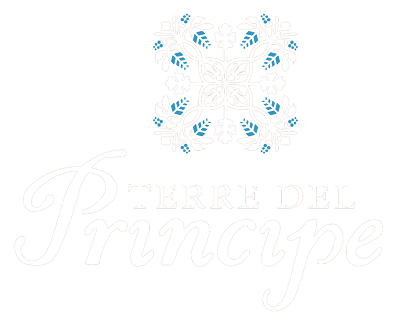Vineyards and soils
Organic, a choise of mind and heart
Since some years we apply the organic agriculture and for the 2019 vintage all wines are organic wines (Suolo e Salute Control and Certification). We strongly believe in the organic chose. We wish to leave healthy soils, like we found. We never used herbicides or pesticides, also when we were not “organic”. In all our vineyards, grass grows readily, but is quickly cut. In alternate rows, each year we fertilize using spring field beans which is green manured.
The Aunt Rosa Vineyard
The Aunt Rosa Vineyard is the so-called “Field mother" because it is from this small vineyard that the modern adventure of Pallagrello and Casavecchia was born, having been taken there from the first roots for reproduction. Located in Prea of Castel di Sasso, it is very little but has ancient plants - some of which are authentic carvings - of approximately 150 years, prefilloxera and ingrafted. The branches are very long, are crossed on the strings. The yield is about 20 quintals per hectare.
Monticelli and Bosco Agnese Vineyards
The largest of our properties, about 7 hectares, is in the village of Squille (Castel Campagnano) and includes two vineyards, Vineyard Monticelli and Bosco Agnese; they are completely surrounded by forest (within which there is a large ditch for the production of lime from stones). Vineyard Monticelli was planted in 1987, and comprises about 3 and a half hectares, on which grows Pallagrello white, Black Pallagrello ands Casavecchia vines. The farming system used is the "semipergola casertana”, an old pergola system which allows just two branches to produce fruit, thus allowing the passage of air and light. The sixth of the vineyards planted is 2.50 x 2.50, 1,600 plants per hectare. The exposure of the vineyard is prevalent to the north-east, with one of the rows east-west. The yield per hectare is around 40-45 quintals.
Bosco Agnese is instead a young vineyard of about two hectares planted in 2008 with Pallagrello white grapes. Here the farming system is "Guyot" with a sixth plant 2 x 1, or 5000 plants per hectare. The orientation of the vineyard is east-west. The yield per hectare is around 60 quintals.
Vigna del Sasso
Vigna del Sasso is a small vineyard located at Bosco Martini in Castel di Sasso. The vineyard, planted in 2008 with Casavecchia, is completely surrounded by woods and enjoys a microclimate that keeps away a great majority of diseases of the vines. The grapes are harvested and dried and are intended for production of a dessert wine: “Il Sasso di Riccardo”. The exposure of the vineyard is east-west, and the sixth plant is 2.50 x 1.50; the farming system used is the traditional "high back". The yield per hectare is 40 quintals.
Vigna del Sasso
The Mascioni vineyard is a small plot of about 1 and a half hectares on a very sweet hill overlooking the Taburno. It is all cultivated with white Pallagrello, planted about twenty years ago, with guyot espalier training, five thousand plants per hectare. Behind it, the winds coming from the Matese massif refresh the grapes during the summer and their temperature range.
The soils of our vineyards are characterized by the so-called "Sandstones of Caiazzo," geological formations of Miocene Tortonian origin, dating back to a period between 7 and 5 million years ago. In that period, the hydrogeological structure was totally different from today and the Atlas Mountains of Matese were entirely covered by a tropical sea with warm, shallow waters. Therefore, in our vineyards we found traces of fossils (mollusks with rocks), and this explains the massive presence of sands that are mixed with clay and volcanic debris. Shoals of gray tuff alternate with thin marly clays and silty banks. Additionally, the strong presence of stones and ash residue in the soil is instead due to its proximity to the extinct volcano of Roccamonfina, about twenty kilometers by air, and Vesuvius volcano only thirty kilometers away.
IGT Terre del Volturno
All of our wines are designated as 'Igt’ or IGP, as for Terre del Volturno (DM 30.11.2011).
The area where Pallagrello can be grown extends through solely 21 small towns in the province of Caserta, with the center of production located at Castel Campagnano. Across the north, in fact (from Fontegreca to Gioia Sannitica) the production of the grape, Pallagrello, is largely limited to low consumption as well as in the historical places of Pallagrello (Piedimonte and Alife) which means that now the vines are very few. Of the approximately 69 hectares of vines of Pallagrello Casavecchia located in the whole area (source Campania Region, Sector IPA, 2011), less than 33 hectares are located at Castle Campagnano.
On the map it is possible to identify the geographic areas of production within the vast area of the province of Caserta.
Soils analysis
These analyses of the soil of our largest vineyard, Monticelli, were carried out by the Chemical Laboratory of the commodity Naples Chamber of Commerce (Test report no. 3236 and 1421). We report the most significant figures with their respective benchmarks:
Antimony <0.01 mg/kg - max limit 10 mg/kg
Beryllium 0.02 mg/kg - max limit 2 mg / kg
Cadmium <0.01 mg/kg - max limit 2/kg
Chromium 2.29 mg /kg - max limit 150 mg / kg
Cobalt 1.45 mg/kg - max limit 20 mg / kg
Copper 15.83 mg /kg - max limit 120 mg / kg
Lead 4.38 mg/kg - max limit 100 mg / kg
Nickel 27.9 mg/kg - max limit 120 mg / kg
Selenium <0.01 mg/kg - max limit 3 mg/kg
Polychlorinated biphenyls (dioxins) <0.01
Polycyclic aromatic hydrocarbons (combustion residues) <0.01
Residues of pesticides and herbicides <0.01
